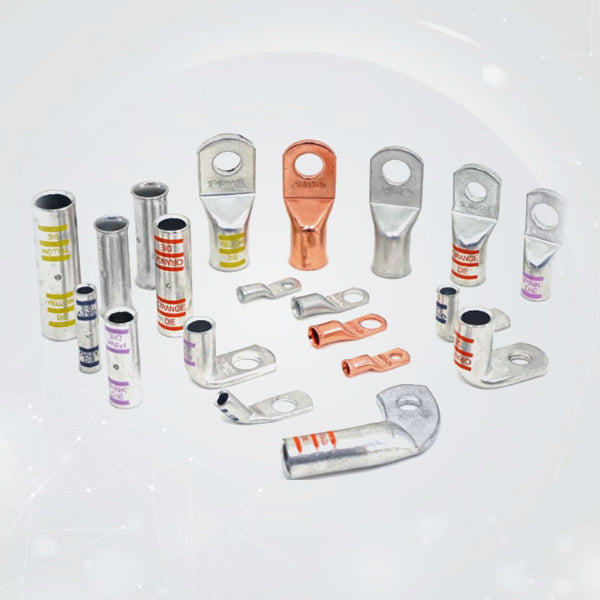
What is a 250 KCMIL Lug and How Does It Differ from 250 MCM Lugs?
If you work with high-power systems, such as industrial equipment, commercial solar installations, or large battery banks, you may have come across 250 KCMIL lug, 250 MCM lug & 250 MCM wire lugs.
It is easy to think they are referring to different things, at face value. But do they? And if not, why do two terms even exist?
In this guide, I will dive into what a 250 KCMIL lug is, and how it relates to 250 MCM lugs, and what to consider when selecting the right lug for your high-capacity wiring application.
What Is KCMIL?
KCMIL stands for thousands of circular mils. It’s a unit of measurement used to describe the cross-sectional area of large electrical conductors, mainly for wires larger than 4/0 AWG.
So, a 250 KCMIL wire has a cross-sectional area of 250,000 circular mils.
This sizing is common in:
- High-power electrical systems
- Industrial control panels
- Marine and heavy-duty automotive setups
- Large solar power inverters and energy storage systems
- Generator and UPS systems
To terminate such a thick cable safely and securely, you need a properly sized lug, the 250 KCMIL lug.
What About 250 MCM?
Here’s where the confusion comes in.
MCM is simply an older way of writing KCMIL. It stands for thousand circular mils, and both terms mean the exact same thing.
250 MCM lug = 250 KCMIL lug
It’s that simple. The wire size is the same. The lug size is the same. The only difference is a little semantics.
MCM is widely recognized, but KCMIL is the standard term for a conductor size that is now favored by the industry (regulatory standards such as UL and NEC publications). In practice, many users and manufacturers continue to use MCM simply out of habit or comfort.
Pro tip: If the lug is marked as either a 250 KCMIL lug or a 250 MCM lug, they're the same. Go ahead and use them interchangeably; Both are designed for the same cable size.
What Is A 250 KCMIL Lug Used For?
You’re not using 250 MCM cable unless your system moves serious current. These lugs are used to connect thick, high-capacity wires to terminals like:
- Battery posts
- Busbars
- Grounding points
- Fuse blocks
- Power distribution panels
You’ll commonly find 250 MCM lugs used in:
- Solar power installations (especially off-grid or commercial scale)
- Large battery banks in RVs, boats, or backup systems
- Generator and inverter connections
- Data center and telecom power systems
- High-current marine and industrial setups
What To Look For In A Quality 250 MCM Wire Lug
When dealing with this level of current, you can’t compromise on connection quality.
Here's what makes a 250 MCM wire lug worth your trust:
1. High-Conductivity Copper
Selterm’s 250 MCM lugs are made from 99.9% pure electrolytic copper, ensuring optimal current flow with minimal resistance.
2. Tin-Plated For Corrosion Resistance
Especially useful in marine, outdoor, or industrial environments, tin plating helps prevent oxidation, keeping connections clean and long-lasting.
3. Seamless Barrel Design
A seamless lug barrel gives you a stronger crimp and greater vibration resistance, critical in mobile and high-load systems.
4. UL & CUL Certified
Look for lugs that meet safety certifications, especially if you're working on commercial or regulated projects.
Installation Tips For 250 KCMIL Lugs
Handling large wire isn’t like connecting speaker cable. These thick conductors and their lugs require a bit more planning and proper tools.
1. Use A Hydraulic Crimper
Manual tools won’t cut it. Use a heavy-duty hydraulic crimper with the correct die to ensure a solid bond.
2. Check The Fit
Make sure the wire is fully seated in the barrel before crimping. There should be no visible copper strands sticking out.
3. Heat Shrink For Protection
To increase moisture resistance and mechanical strength, seal the connection with dual-wall heat-shrink tubing. This is especially useful for marine or outdoor installs.
4. Know Your Stud Size
Selterm’s 250 MCM lug collection offers options in common stud sizes like 1/4", 5/16", and 3/8". Choose based on the terminal you're connecting to.
When Should You Use Bare Vs Tinned 250 MCM Lugs?
Both have their place depending on the environment:
| Type | Best For | Why |
| Bare Copper | Indoor or dry locations | Excellent conductivity where corrosion isn’t a concern |
| Tinned Copper | Marine, automotive, or outdoor | Resists rust, oxidation, and salt spray |
If you're unsure, go with tinned, it adds protection without compromising performance.
Why Choose Selterm?
When you’re dealing with thick cable and high amperage, cutting corners at the terminal is a risk you can’t afford.
Selterm’s 250 KCMIL lugs are trusted across industries because they’re:
Made from oxygen-free, high-conductivity copper
Precision-engineered for clean crimps and tight fits
Tested for safety, with UL and CUL certifications
Offered in multiple stud sizes and pack options
Whether you are controlling your solar power, building a boat battery bank, or upgrading an industrial panel, Selterm provides professional-quality connectors designed for high performance.
Final Thoughts
So, what’s the deal with 250 KCMIL vs 250 MCM?
They’re the same thing, just two ways of writing the same wire size. What really matters is choosing a high-quality lug that matches your wire and application.
The 250 MCM wire lugs from Selterm deliver the reliability, safety, and durability for the type of systems that can’t fail.
When you are dealing with heavy-duty power, your foundations are your connection points, and Selterm makes sure you get it right.

